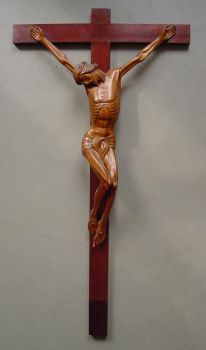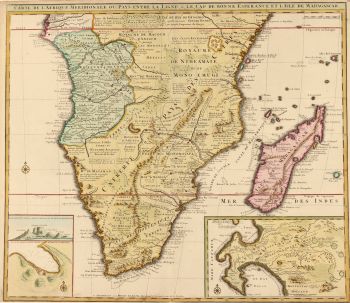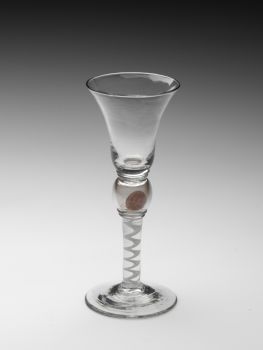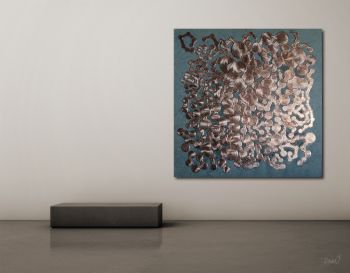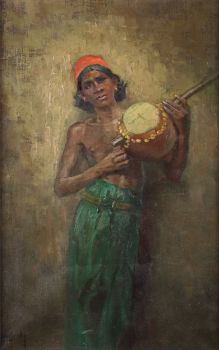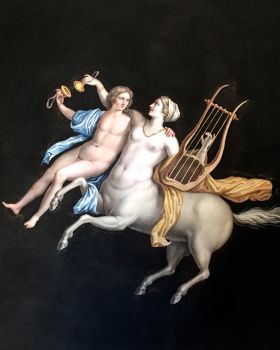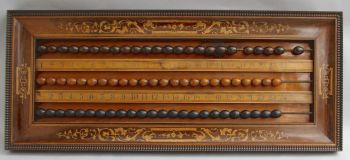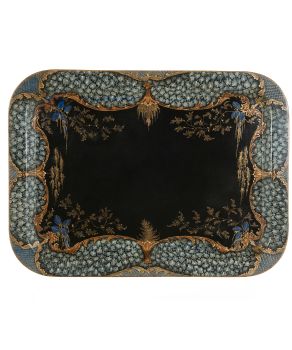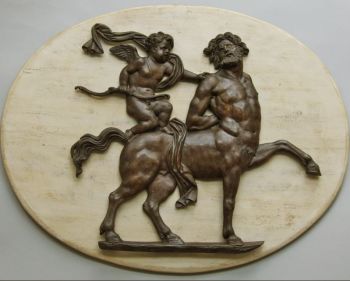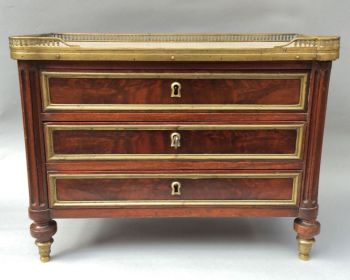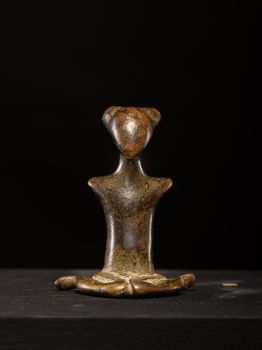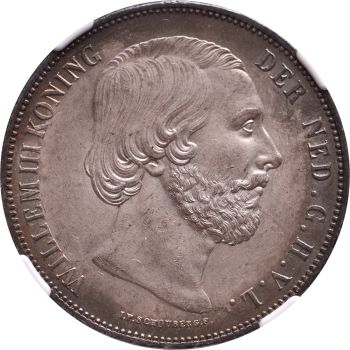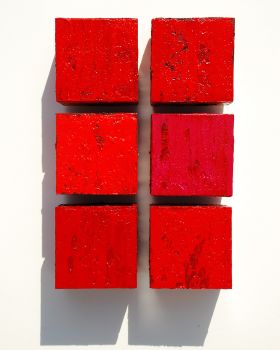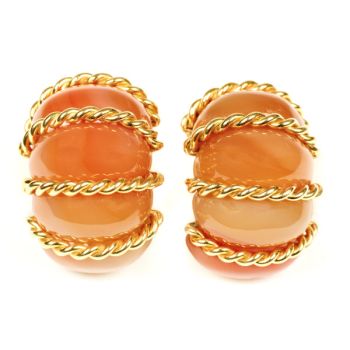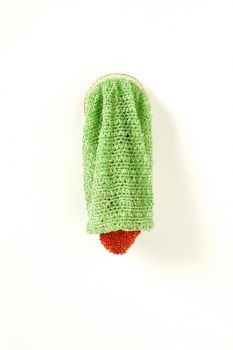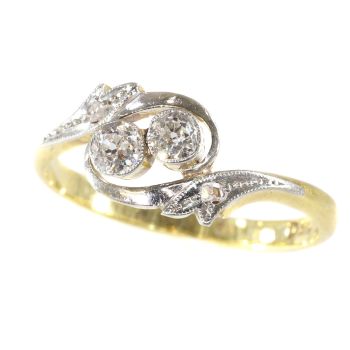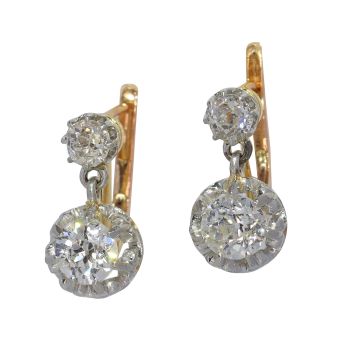Chinese carnelian agate vase or brush washer, 18th/19th century, Qing dynasty 1720 - 1820
Artista Desconocido
ÁgataCornalinaPiedra preciosa
7.80 ⨯ 9.50 ⨯ 5.50 cm
ConditionMinor damages
Precio a consultar
Menken Works of Art
- Sobre la obra de arteA fine Chinese red carnelian agate ‘tree trunk’ vase or washer.
Qing dynasty, 18th-19th century.
Cleverly hollowed out and carved in relief as a section of a tree trunk, the exterior with gnarled leafy tree branches issuing peaches, flanked by two lingzhi and a bat flying in upward motion.
Symbolism:
Bat (fu 蝠), peach (tao 桃), and fungus (lingzhi 靈芝) combined make a rebus: “May your heart be filled with intelligence when blessings arrive” (fuzhi xinling 福至心靈). The saying literally means “May you be inspired when blessings arrive.” In this instance, the peach has a cleft, giving it a heart-shaped (xin 心) appearance. Thus the peach symbolizes a person’s heart. The fungus (lingzhi 靈芝) is a pun for “intelligence” (ling 靈).
Note:
The heart symbolization is emphasized by the overall carving which, besides depicting a tree trunk, also closely resembles the human heart-shape, adding a different layer to the overall quality of the piece. The symbolism is especially expressed when held against the light (see photo 2 and 4) whereby the natural veining and inclusions of the stone become beautifully visible.
Ref:
Compare with other carvings bearing close resemblance, but of red and white agate:
National Palace Museum Taipei, image number K1D000778N000000000PAB
The Metropolitan Museum of Art New York, accession Number: 02.18.868
Sotheby’s New York, 28 September 2021, lot 846
Christie’s New York, 23-24 Mar 2023, lot 1284
Bonhams London, 23 September 2015, lot 269
Lit:
Bartholomew, Terese Tse - Hidden Meanings in Chinese Art p. 26, nr. 1.1.16
Dimensions:
Height 7.8 cm, width 9.5 cm, depth 5.5 cm.
Condition:
A small chip to the base rim and one peach broken off.
Inv. No: MW50 - Sobre el artista
Puede suceder que un artista o creador sea desconocido.
Algunas obras no deben determinarse por quién está hecho o por (un grupo de) artesanos. Algunos ejemplos son estatuas de la Antigüedad, muebles, espejos o firmas que no son claras o legibles, pero también algunas obras no están firmadas en absoluto.
También puedes encontrar la siguiente descripción:
•"Atribuido a …." En su opinión, probablemente una obra del artista, al menos en parte.
•“Estudio de….” o “Taller de” En su opinión, una obra ejecutada en el estudio o taller del artista, posiblemente bajo su supervisión
•“Círculo de…” En su opinión, una obra del período del artista que muestra su influencia, estrechamente asociado con el artista pero no necesariamente su alumno.
•"Estilo de …." o “Seguidor de…”. En su opinión, una obra ejecutada al estilo del artista pero no necesariamente por un alumno; puede ser contemporáneo o casi contemporáneo
•"Manera de …." En su opinión una obra al estilo del artista pero de fecha posterior
•"Después …." En su opinión, una copia (de cualquier fecha) de una obra del artista
•“Firmado…”, “Fechado…” o “Inscrito” En su opinión, la obra ha sido firmada/fechada/inscrita por el artista. La adición de un signo de interrogación indica un elemento de duda.
•“Con firma…”, “Con fecha…”, “Con inscripción…” o “Lleva firma/fecha/inscripción” en su opinión la firma/fecha/inscripción ha sido añadida por alguien que no es el artista
¿Está interesado en comprar esta obra de arte?
Artwork details
Related artworks
Artista Desconocido
Pulseira de diamante do século 18 com entalhes de 2.000 anos1790
€ 23.000Adin Fine Antique Jewellery
 curada por
curada porDanny Bree
Artista Desconocido
Un cáliz de monedas inglés-holandés1738
Precio a consultarPeter Korf de Gidts - Antiquairs
1 - 4 / 12HUGO VILFRED VON PEDERSEN
Gadesanger fra Singapore (Musician from Singapore)1870 - 1959
Precio a consultarZebregs & Röell - Fine Art - Antiques
1 - 4 / 13Artista Desconocido
Chinese gilt bronze censer, Xuande mark, 18th century, Qing dynasty18th century
Precio a consultarMenken Works of Art
Artista Desconocido
A white jade ‘Lotus Seedpod and Bug’ carving, Qing dynasty, 18th century18th century
Precio a consultarMenken Works of Art
Artista Desconocido
Two Centaurs, France or Italylate 18th
Precio a consultarRobert Schreuder Antiquair
1 - 4 / 24- 1 - 4 / 24
Artista Desconocido
A white jade ‘Lotus Seedpod and Bug’ carving, Qing dynasty, 18th century18th century
Precio a consultarMenken Works of Art
Artista Desconocido
Chinese gilt bronze censer, Xuande mark, 18th century, Qing dynasty18th century
Precio a consultarMenken Works of Art
1 - 4 / 12

















